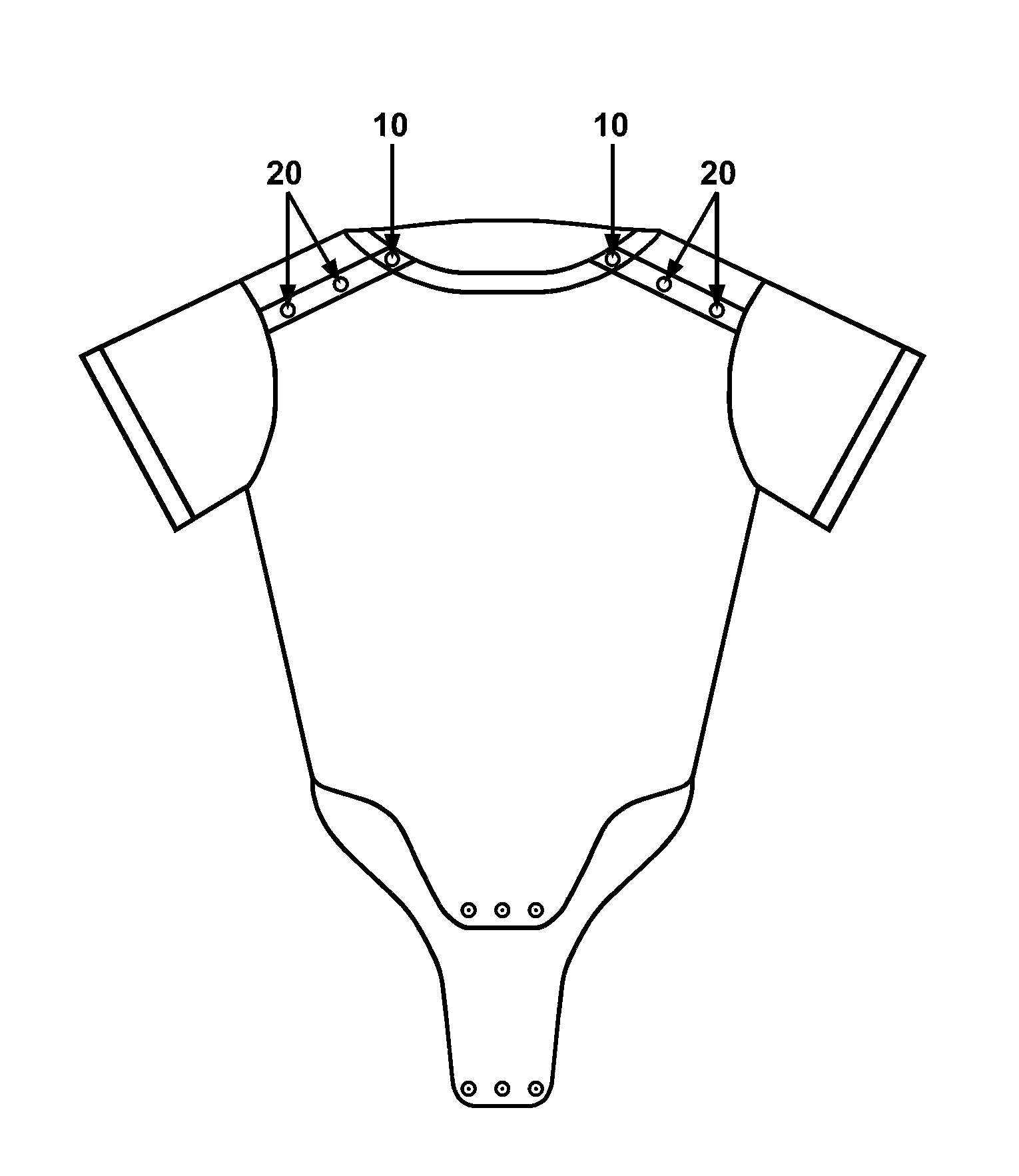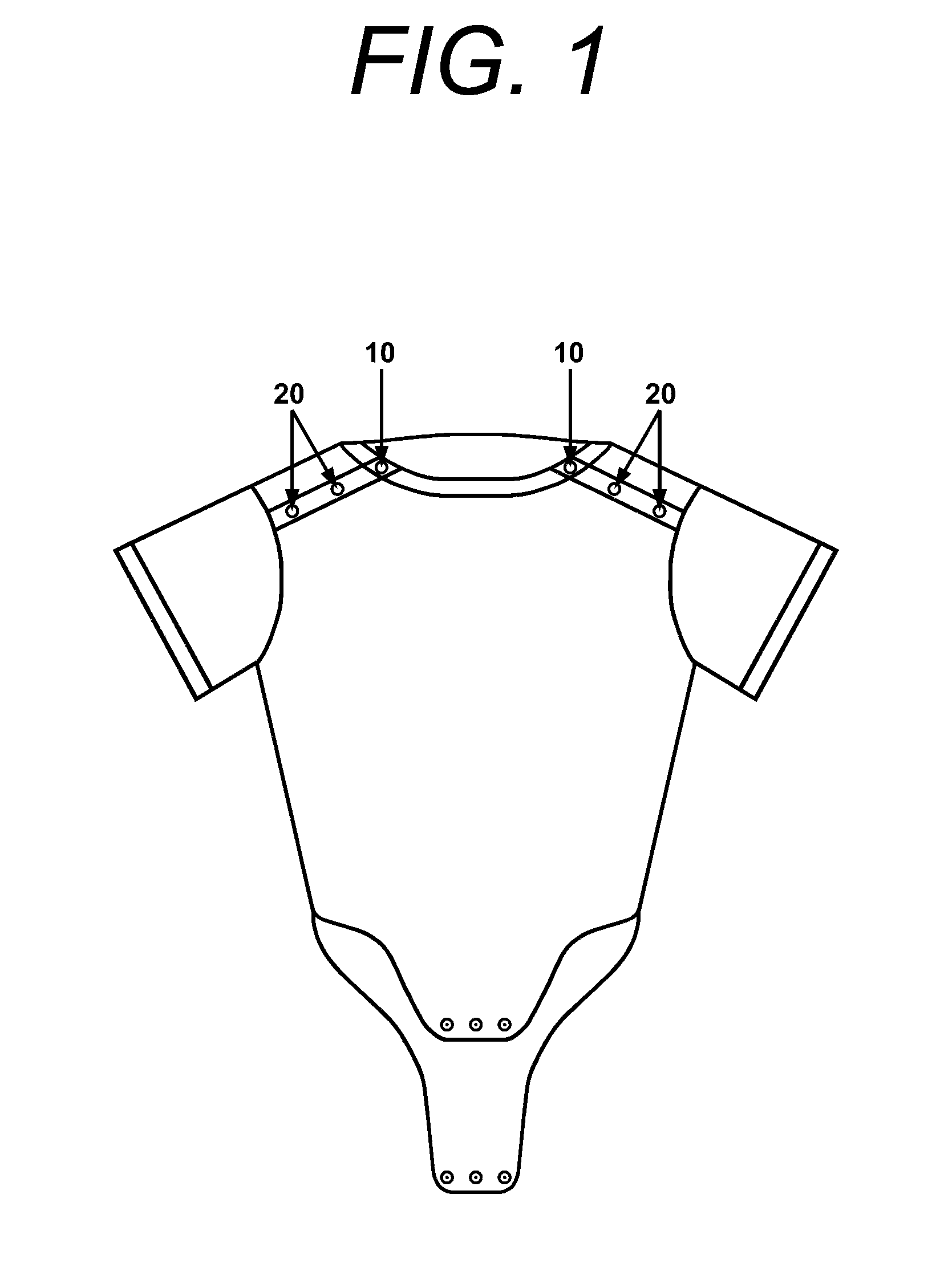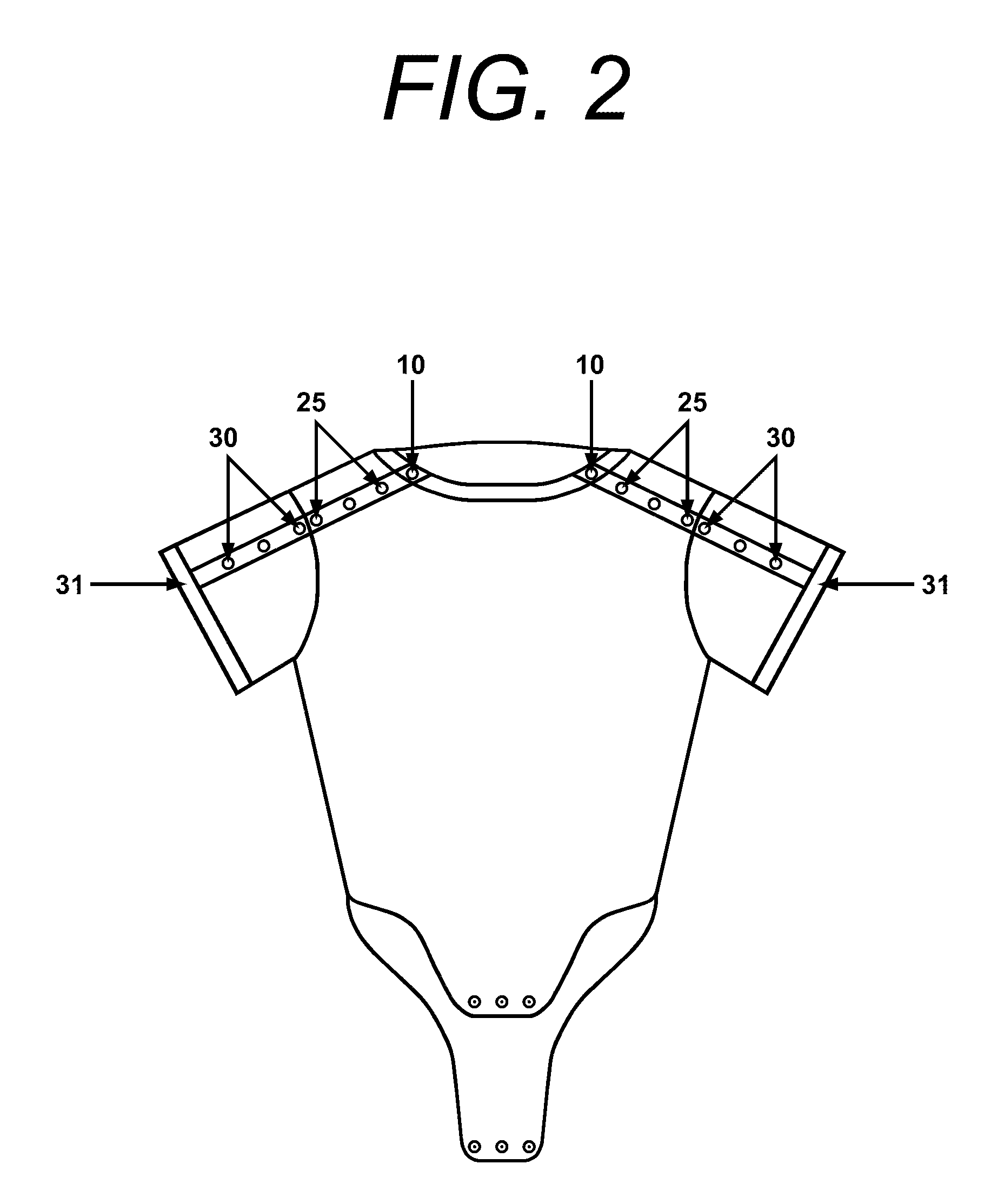Garments with front opening seams
a front opening and seam technology, applied in protective garments, pyjamas, nightdresses, etc., can solve the problems of difficult closure and opening means, many are not well suited to the different sizes required for dressing infants and invalids with garments, and many are not well suited to the different sizes. , to achieve the effect of shortening the sleeve length, shortening the trouser leg length, and facilitating the dressing of the invalid
- Summary
- Abstract
- Description
- Claims
- Application Information
AI Technical Summary
Benefits of technology
Problems solved by technology
Method used
Image
Examples
Embodiment Construction
[0096]In order to more fully understand the invention, during the course of this description, the easy access garments invention and preferred embodiments, will be labeled and explained to easily identify like elements according to the different figures which illustrate the invention.
[0097]In accordance with the preferred embodiments of the invention, FIGS. 1 through 30 preferably include a prior art garment with a closure and opening means seam located on a frontal section of said garment, for use while a wearer is laying face up in the prone position or while the wearer is looking at oneself in a mirror.
[0098]In the preferred embodiments of the present invention, the torso portion of a garment has the shoulder seam moved to a neck, collarbone and front shoulder location and include a closure and opening means, and the sleeves have the seam moved from the bottom of the sleeve to the front of the sleeve section including a closure and opening means connected to the neck, collarbone ...
PUM
 Login to View More
Login to View More Abstract
Description
Claims
Application Information
 Login to View More
Login to View More - R&D
- Intellectual Property
- Life Sciences
- Materials
- Tech Scout
- Unparalleled Data Quality
- Higher Quality Content
- 60% Fewer Hallucinations
Browse by: Latest US Patents, China's latest patents, Technical Efficacy Thesaurus, Application Domain, Technology Topic, Popular Technical Reports.
© 2025 PatSnap. All rights reserved.Legal|Privacy policy|Modern Slavery Act Transparency Statement|Sitemap|About US| Contact US: help@patsnap.com



